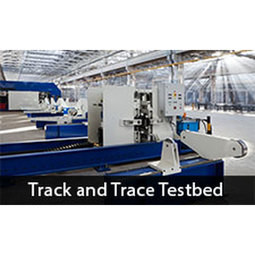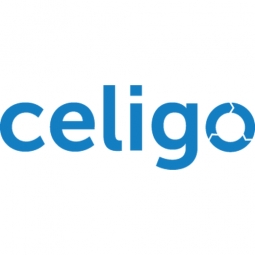Technology Category
- Application Infrastructure & Middleware - Data Exchange & Integration
- Application Infrastructure & Middleware - Middleware, SDKs & Libraries
Applicable Functions
- Sales & Marketing
Use Cases
- Leasing Finance Automation
- Track & Trace of Assets
Services
- System Integration
- Training
About The Customer
Strongpoint is a Toronto-based company that provides documentation, change management, and compliance solutions for Salesforce and NetSuite. Their services enable thousands of companies, including many publicly traded enterprises, to drive growth with confidence and certainty. They use NetSuite as their CRM and Hubspot for marketing automation, collecting thousands of contacts per day from various sources. Despite the challenges they faced in managing these contacts and leads, they sought a solution that would not require significant technical resources or a full-time NetSuite administrator.
The Challenge
Strongpoint, a documentation, change management, and compliance solution provider, was facing a significant challenge in managing their contacts and leads. They were using NetSuite as their CRM and Hubspot for marketing automation, collecting thousands of contacts per day from various sources. However, transferring these contacts from Hubspot to NetSuite was a manual and time-consuming process, involving exporting contacts as CSV files, cleaning up the data, and then importing them into NetSuite. This process often took days, delaying the sales team's ability to reach out to potential leads. In many cases, the process was so cumbersome that it was not done at all, leading to lost sales opportunities. Strongpoint needed a solution that would integrate Hubspot and NetSuite to automatically sync contact information, without requiring significant technical resources or a full-time NetSuite administrator.
The Solution
Strongpoint's CEO, Mark Walker, sought an iPaaS solution that could efficiently address their challenge without requiring dedicated technical resources. He chose Celigo, an integration platform that met their specific requirements. The onboarding to full implementation took about two days, without any training. The integration flows were bidirectional, automatically syncing thousands of contacts from Hubspot to NetSuite and sharing the resulting activities from NetSuite CRM back with Hubspot. This increased visibility allowed Strongpoint’s sales team to better assess the interest level of leads. Furthermore, Mark used Celigo's Integrator.io to improve Strongpoint’s core product by custom-coding an advanced integration that could track changes to documentation across applications. This was done using Javascript, a more prevalent language, instead of PHP or Ruby, typically required for advanced integrations.
Operational Impact
Quantitative Benefit

Case Study missing?
Start adding your own!
Register with your work email and create a new case study profile for your business.
Related Case Studies.

Case Study
IoT Applications and Upgrades in Textile Plant
At any given time, the textile company’s manufacturing facility has up to 2,000 textile carts in use. These carts are pushed from room to room, carrying materials or semi-finished products. Previously, a paper with a hand-written description was attached to each cart. This traditional method of processing made product tracking extremely difficult. Additionally, making sure that every cart of materials or semi-finished products went to its correct processing work station was also a problem. Therefore, the company desired an intelligent solution for tracking assets at their factories. They also wanted a solution that would help them collect process data so they could improve their manufacturing efficiency.

Case Study
Goldcorp: Internet of Things Enables the Mine of the Future
Goldcorp is committed to responsible mining practices and maintaining maximum safety for its workers. At the same time, the firm is constantly exploring ways to improve the efficiency of its operations, extend the life of its assets, and control costs. Goldcorp needed technology that can maximize production efficiency by tracking all mining operations, keep employees safe with remote operations and monitoring of hazardous work areas and control production costs through better asset and site management.

Case Study
Buoy Status Monitoring with LoRa
The Netherlands are well-known for their inland waterways, canals, sluices and of course port activities. The Dutch Ministry of Infrastructure indicates that there are thousands of buoys and fixed items in and near water environments that would profit from IoT monitoring. One of the problems with buoys for example, is that they get hit by ships and the anchor cable breaks. Without connectivity, it takes quite some time to find out that something has happened with that buoy. Not to mention the costs of renting a boat to go to the buoy to fix it. Another important issue, is that there is no real-time monitoring of the buoys at this moment. Only by physically visiting the object on the water, one gains insight in its status.
Case Study
IoT Based Asset Tracking System
The existing system used by the customer could only track a few thousand assets and was able to generate only a few standard set of reports. As the number of assets tracked grew exponentially, the system started to break at the seams. The Tracking devices were from different manufacturers following different protocols. There was no proper integration among the devices to send instant alerts. There are thousands of tracking devices spread across multiple geographies, that are moving. The configuration and troubleshooting of these devices incurred heavy costs, which was a logistics challenge. The existing system did not provide sophisticated Analytics, Business Intelligence and Insights from the data

Case Study
IIC - Track and Trace Testbed
Factory systems can detect - within a meter - the location of a tool; Misuse of tools can result in serious accident or injury; The production of many industrial and consumer goods requires exacting work - down to the precise force used to tighten a screw. GOAL Manage smart, hand-held tools in manufacturing, maintenance, and industrial environments




